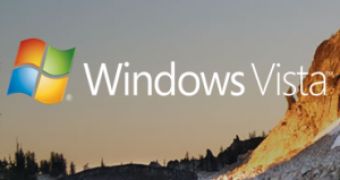Microsoft released its latest operating system in two stages, in order to create a clear delimitation between the business and the general clients. Windows Vista Enterprise shipped in November 2006 while the rest of the editions were made available to the general consumers in January 2007. With this move, Microsoft clearly underlined that Vista was an operating system designed to deliver the Wow both in a corporate and in a home environment. And the Redmond company's strategy did not by any means stop at that point.
Simply making Vista available is not sufficient for corporate environments. And this is why Microsoft is supporting the operating system's adoption by businesses via an extensive and comprehensive lineup of offerings. The latest release in this context is the Windows Vista Service Life-Cycle Management, a Solution Accelerator that includes guidance, templates, and job aids for the planning and implementation of "best practice service life-cycle management of Windows Vista desktop infrastructures."
"Windows Vista Service Life-Cycle Management rounds out our Solution Accelerator content for Windows Vista. Now whether you are evaluating required hardware upgrades, planning and executing large scale deployment projects or standardizing new user provisioning, determining security and configuration policies or developing a service strategy for ongoing management of Windows Vista desktop infrastructures, we have content and tools to help," revealed Jeremy Chapman, Microsoft Product Manager.
The company built a collection of tools and documentation around Vista in order to enable corporate clients to have complete control over their desktops, accelerate and streamline the operating system's deployment and management and enhance the levels of IT responsiveness and end-user uptime. But ultimately, Microsoft focused on Vista as an essential part of the solution to reduce the total cost of ownership. The Windows Vista Service Life-Cycle Management guide is just the freshest addition to the already available Solution Accelerators such as the Windows Vista Hardware Assessment, Business Desktop Deployment (BDD) 2007, Windows Vista Security Guide and the Data Encryption Toolkit for Mobile PCs.
"This guide is great because it makes all the concepts you read about in the Microsoft Operations Framework (MOF), IT Infrastructure Library (ITIL) and ISO real for your daily operations. Instead of just describing theories about how things ought to be run, it gives you implementer guidance according to roles in the IT department and gives you samples to use (see below) like an editable service map, daily/weekly/monthly activity logs, a service level agreement and partner underpinning contracts," Chapman added.

 14 DAY TRIAL //
14 DAY TRIAL //